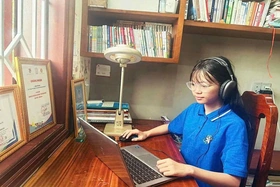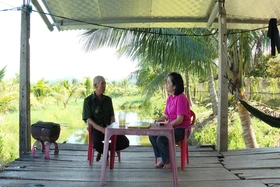VuG6tUDhu7Y1ZDtsbFThu7TEqU3Dom1kOOG7tFdWbG1rw6ll4bqzV8O9w6llNcOiZMOiO23DosOpZeG7tm3hurVrw6lu4bqz4bq14bu2beG6tTjhu7ZsbcOpa+G7neG7tsOp4bq34bu2beG6tTjhu7bhurNrO+G7lzhsVi9sbWvDqWXhurNXVi/hurVAV1bEqeG7tjVkO2xsVOG7tMSp4bq0ODs24bu0V0zDqcSROMah4bq1OGs44bu2w6Jl4bu2TMOpbm3hurXhu7ZDw6lrODvhu6jhu7Zt4bq1OGs44bu2O2s44bu2xKlrw6k0OzRk4bud4bu2xJHDqW3hurU4a2zhu7bGoeG6tcOp4bu2O2s44bu24bq1ODtrbTRrw6ljOGXhu7Y7NMOpbm3hu7Zt4bq1OMOia+G7tmzDqWVsJ+G7tsSRODtlw6Jl4bqzZDhsbOG7tjY4O23hurVs4bu2O2zhu7bEkThrNThlO2vDojhs4bu24bq3w6lr4bu2beG6tTjhu7ZOTOG7tsOiZeG7tm3hurU44bu2xqE7a+G7tsOiZeG7tuG7lsOiOG1lO8SR4buq4bu2eW5t4bu2beG6tTjhu53hu7bGocOpbmQ24bu2ZcOpbeG7tjjhu5vEqTg1beG7tm3hurU7beG7tsOpZTjhu7bDqeG6t+G7tm3hurU4w6Jr4bu2bMOpZWzhu6jhu7bGoeG6tcOp4bu2NGvDqW7hurPhurVt4bu2Njg7beG6teG7tjtlNuG7tuG6tTttazg24bu2bcOp4bu24buWw6I4bWU7xJE4bDjhu7bEqTjDqcSpZDjhu6jhu7ZsbcOiZGThu7ZrOGxtbOG7tsOiZeG7tsSpODs1OOG7tsOiZeG7tkpuO2XhurPhu7ZNa8Oi4buqVi/EqVdWxKnhu7Y1ZDtsbFThu7TEqXnDqTbhu53hu7RXw4Lhu7Y1O8SROOG7tm3DqeG7tk07ZeG7tuG7mm47ZeG7tuG7lsOiZGQ74bqzOOG7tsOiZeG7tsO9O8SR4bu2RMOp4bu24buzw6JsbWvDojVt4oCZbOG7tsO9O8SR4bu2TeG6tW7hu53hu7bDvcOpxJHEkW5lOOG7tm3DqeG7tmw4OOG7tjjhu5stxJHDomTDom07ZW3hu7bDqeG6t+G6t8OiNThr4bu24buzO8Op4bu24buabjtl4bu24buzbuG7neG7qOG7tsah4bq1w6nhu7bhurU7bOG7tjjhu5vhurVuxJE4NuG7tjtlNuG7tm07Yzhl4bu2NTtrOOG7tsOp4bq34bu2beG6tTjhu7ZrOMSRO8OiZWzhu7bDqeG6t+G7tjvhu7ZDw6lrODtl4bu2bMOpZDbDojhr4bu24bq3w6lr4bu24budODtrbOG7qlYvxKlXVsSp4bu2NWQ7bGxU4bu0xKl5w6k24bud4bu0V+G7s27hu53igJls4bu24bq1w6lubDjhu7bhurU7bOG7tmzDqcSROOG7tjY4bDhrbTg24bu2xKk7a21s4bu2bG5ra8OpbmU2ODbhu7Y04bud4bu2bWs4OGzhu6jhu7bEkTtjw6Jl4bqz4bu2w6Jt4bu24bq3ODhk4bu2ZMOiYzjhu7Y74bu24bq1O2ThurctxJHDqW5lbTvDomXhu6jhu7bhurU7ZOG6ty3EqWQ7w6Jl4bu2azjhurPDosOpZeG7quG7tuG6tDjhu7Ztazg7bWzhu7bEkTjhu7bGocOibeG6teG7tuG6tcOpxJE4ZMOiZThsbOG7tjtlNuG7tmzDomU1OGvDom3hu53hu7Y7beG7tm3hurU44bu24bq3O27hu5vhu7bGocOpw6k2OGXhu7ZtODvhu7ZtOzRkOOG7tsOiZeG7tuG6t2vDqWVt4bu2w6nhurfhu7Zt4bq1OOG7tuG6tcOpbmw44bu2ZMOiYzjhu7Y7ZeG7tsOpZDbhu7Y7NWpuO8OiZW07ZTU44buqVi/EqVdWxKnhu7Y1ZDtsbFThu7TEqXnDqTbhu53hu7RXVsOixJHhurPhu7Y1ZDtsbFThu7TDosO9OGVtOGvhu7Thu7ZsazVU4bu04bq1bW3EqWzFqC8vNeG7qjQ7w6lqbjtl4bqzbWvDouG7quG7l2UvNjhsY23DqcSpL2U4xqFsLyMk4bu4Ki9AQCQ24bu4QCThu7g9QDptJD86KmQ9LXol4bu4Pz0l4bu4KiM9Iyo6Ji0jJkDhurck4buqxqE4NMSp4bu04bu2O2RtVOG7tMO9w6llNcOiZMOiO23DosOpZeG7tm3hurVrw6lu4bqz4bq14bu2beG6tTjhu7ZsbcOpa+G7neG7tsOp4bq34bu2beG6tTjhu7bhurNrO+G7lzhs4bu04bu2L1dWL8SpV1bEqeG7tjVkO2xsVOG7tMSpw707xKltw6LDqWXhu7RXTeG6tTjhu7Y0w6JrNuG7l8OiOMah4bu2w6nhurfhu7bDvTvEkeG7tk3hurVu4bud4bu2w73DqcSRxJFuZTjhu6rhu7bEqOG6tcOpbcOpxajhu7ZEOOG7tk1rbsOpZeG6s1YvxKlXVsSp4bu2NWQ7bGxU4bu0xKl5w6k24bud4bu0V+G7s27hu53hu7Ziw6nDomU4NuG7tm3hurU44bu2O2vEkeG7neG7tsOiZeG7tkA6Jibhu6rhu7bhurbDqW5r4bu24budODtrbOG7tmQ7bThr4buo4bu24bq1OOG7tsahO2zhu7Y2w6JsNeG6tTtr4bqzODbhu7bhurdrw6nEkeG7tm3hurU44bu2xJHDomTDom07a+G7neG7tjtlNuG7tsahw6lrYzg24bu2O2zhu7Y74bu2xJE4xJE0OGvhu7bDqeG6t+G7tm3hurU44bu2bDg1azhtO2vDojtt4bu2w6nhurfhu7Zt4bq1OOG7tsSoOMOpxKlkOOKAmWzhu7bDvcOpxJHEkcOibW04OOG7tsOp4bq34bu2w707xJHhu7ZN4bq1buG7neG7tsO9w6nEkcSRbmU44buqVi/EqVdWxKnhu7Y1ZDtsbFThu7TEqXnDqTbhu53hu7RX4bq0OOG7tm3hurU4ZeG7tm3DqcOpY+G7tuG7lztrw6LDqW5s4bu24buXw6JtO2Thu7bEqcOpbMOibcOiw6llbOG7tsOiZeG7tm3hurU44bu2ZMOpNTtk4bu24bqzw6nhu5c4a2XEkThlbeG7qOG7tmxuNeG6teG7tjts4bu2TDg1azhtO2vhu53hu7bDqeG6t+G7tm3hurU44bu2w73DqcSRxJFuZTjhu7bEqDtrbeG7neG7tsO9w6nEkcSRw6JtbTg44bu24bq3a8OpxJHhu7ZAOjoq4bu2bcOp4bu2I+G7uOG7uOG7uOG7qOG7tuG7lsOiNTjhu7ZMODVrOG07a+G7neG7tsOp4bq34bu2beG6tTjhu7bDvcOpxJHEkW5lOOG7tsSoO2tt4bud4bu2w73DqcSRxJHDom1tODjhu7Y7ZTbhu7bDveG6tTvDomvEkTtl4bu2w6nhurfhu7Zt4bq1OOG7tsO9w6nEkcSRbmU44bu2xKg4w6nEqWQ44oCZbOG7tsO9w6luZTXDomThu7bhurdrw6nEkeG7tiPhu7jhu7jhu7jhu7Ztw6nhu7Yj4bu44bu4JOG7qOG7tjtlNuG7tsO94bq1O8Oia8SRO2Xhu7bDqeG6t+G7tm3hurU44bu2w73DqcSRxJFuZTjhu7bEqDjDqcSpZDjigJls4bu2w73DqcSRxJHDom1tODjhu7bhurdrw6nEkeG7tiPhu7jhu7gkLSPhu7hAJeG7qlYvxKlXVsSp4bu2NWQ7bGxU4bu0xKl5w6k24bud4bu0V8OCZeG7tkA6Pzrhu6jhu7bhurU44bu2ZDg24bu2O+G7tuG6s2vDqW7EqeG7tsOp4bq34bu24bq3w6Lhu5c44bu2xKk4w6nEqWQ44bu2xqHhurXDqeG7tsahOGVt4bu2bcOp4bu2beG6tTjhu7Zsw6JtOOG7tsOp4bq34bu2O+G7tsSpZDtlOOG7tjVrO2zhurXhu7Ztw6nhu7ZsODtrNeG6teG7tjtlNuG7tms4bWvDojjhu5c44bu2beG6tTjhu7ZrOMSRO8OiZWzhu7bDqeG6t+G7tjvhu7ZDw6lrODtl4bu2xKnDomTDqW3hu7Zs4bq1w6lt4bu2NsOpxqFl4bu2w6Jl4bu2beG6tTjhu7bGoTtr4bu2w6Jl4bu24buWw6I4bWU7xJHhu6pWL8SpV1bEqeG7tjVkO2xsVOG7tMSpecOpNuG7neG7tFfhu7RN4bq1OOG7tsSpZDtlOOG7tsSpw6Jkw6ltODbhu7Y04bud4bu2beG6tcOibOG7tkPDqWs4O2Xhu7bEqcOiZMOpbeG7tsahO2zhu7Y1O2tr4budw6Jl4bqz4bu2NTtr4bqzw6nhu7bhurdrw6nEkeG7tkQ7w6ls4bu2xqHhurU4ZeG7tsOibeG7tsahO2zhu7Zs4bq1w6lt4bu2NsOpxqFl4bu2w6Jl4bu2QDoqP+G7quG7tsag4bq1OGXhu7Zt4bq1OOG7tsSpZDtlOOG7tjVrO2zhurU4NuG7qOG7tm3hurU44bu2xKnDomTDqW3igJls4bu2NMOpNuG7neG7tsahO2zhu7ZkO8OiNuG7tmU44bubbeG7tm3DqeG7tsOibeG7quG7tuG7s25rw6Jl4bqz4bu2QDomKuG7tuKAk+G7tkA6Jibhu6jhu7Zt4bq1OOG7tms4xJE7w6JlbOG7tsahOGs44bu2xKlubOG6tTg24bu2NsOpxqFl4bu2w6JlbcOp4bu2NMOpxJE04bu2bOG6tThkbThrbOG7tm3DqeG7tsSRO2M44bu2bMSpOzU44bu24bq3w6lr4bu24bq3O2vEkcOiZeG6s+G7qOG7tOG7tuG7s27hu53hu7ZrODU7ZGQ4NuG7qlYvxKlXVsSp4bu2NWQ7bGxU4bu0xKl5w6k24bud4bu0V+G7tMOCZeG7tkA6Pzrhu6jhu7bEkeG7neG7tuG6s2vDqW7EqeG7tjZu4bqz4bu2bsSp4bu2O2U24bu2azhta8OiOOG7lzg24bu2beG6tTjhu7bEqcOiZMOpbeKAmWzhu7ZrOMSRO8OiZWzhu6rhu7Zy4bq3bThr4bu2I+G7uOG7tuG7nTg7a2zhu7Zsw6JlNTjhu7Zt4bq1OOG7tsSpZDtlOOKAmWzhu7Y1azts4bq14buo4bu2beG6tTjhu7bEqcOiZMOpbeKAmWzhu7ZrOMSRO8OiZWzhu7bGoThrOOG7tjRua8OiODbhu6rhu7RWL8SpV1bEqeG7tjVkO2xsVOG7tMSpecOpNuG7neG7tFfhu7Nu4bud4bu2O2U24bu24bq1w6Js4bu24bq3O8SRw6Jk4bud4bu24bq1O+G7lzjhu7ZtO2M4ZeG7tuG6s8Opw6k24bu2NTtrOOG7tsOp4bq34bu2beG6tTjhu7bhurNrO+G7lzjhu7bhurfDqWvhu7bhu504O2ts4bu2NjhsxKnDom044bu2NDjDomXhurPhu7Y0bmzhu53hu7bGocOibeG6teG7tm3hurU4w6Jr4bu2w6nGoWXhu7Y0bmzDomU4bGzhu7Y7ZTbhu7Zkw6Lhurc44buq4bu2TeG6tTjhu53hu7bhurU74buXOOG7tjXhurU7ZeG6szg24bu2beG6tTjhu7bhurNrO+G7lzjhu7Zkw6k1O23DosOpZeG7tm3GocOp4bu2bcOixJE4bOG7qOG7tsahw6Jt4bq14bu2beG6tTjhu7ZkO204a+G7tjRua8OiO2Thu7Y0OMOiZeG6s+G7tjQ4bW04a+G7tm3hurU7ZeG7tm3hurU44bu2xKlrOOG7l8Oiw6lubOG7qlYvxKlXVsSp4bu2NWQ7bGxU4bu0xKl5w6k24bud4bu0V+KAnMOC4bu2xKlubeG7tm3hurU44bu2Q8Opazg7ZeKAmWzhu7ZrOMSRO8OiZWzhu7bDomVtw6nhu7Y74bu2ZDtr4bqzOOG7tsahw6nDqTY4ZeG7tjU7ZeG7tjtlNuG7tjRua8OiODbhu7bDom3hu7Y7beG7tm3hurU44bu2ODbhurM44bu2w6nhurfhu7Y74bu24bq1w6JkZOG7qOG7tmU44bubbeG7tm3DqeG7tjvhu7Zrw6I1OOG7tuG6t8OiOGQ24bu2bMOp4bu2beG6tTtt4bu2w6Jt4bu2xqHDqW5kNuG7tjQ44bu2ODts4bud4bu2bcOp4bu24bq3w6JlNuG7qOKAneG7tuG7s27hu53hu7ZsO8OiNuG7qlYvxKlXVsSp4bu2NWQ7bGxU4bu0xKl5w6k24bud4bu0V+G6tDjhu7Zt4bq1w6lu4bqz4bq1beG7tm3hurU7beG7tmzDqcOpZThr4bu2w6lr4bu2ZDttOGvhu6jhu7Zt4bq1OOG7tnLEkThrw6I1O2Vs4bu2xqHDqW5kNuG7tjXDqcSROOG7tjtlNuG7tms4bWvDojjhu5c44bu2beG6tTjhu7ZrOMSRO8OiZWzhu7Y7bOG7tuG6tTjhu7Y0OGTDojjhu5c4NuG7tm3hurU44bu2azjEkTvDomVs4bu2NDhkw6ll4bqzODbhu7Ztw6nhu7Y7ZeG7tnLEkThrw6I1O2Xhu7Zsw6lkNsOiOGvhu6pWL8SpV1bEqeG7tjVkO2xsVOG7tMSpecOpNuG7neG7tFfDgmXhu7ZAOjok4buo4bu24buzbuG7neKAmWzhu7bhurc7xJHDomThu53hu7bEkcOp4buXODbhu7Zt4bq1OOG7tuG6s2s74buXOOG7tm3DqeG7tjtlw6lt4bq1OGvhu7Zkw6k1O23DosOpZeG7quG7tk3hurU44bu24bqzazvhu5c44bu2xqE7bOG7tsSpZDs1ODbhu7ZlOOG7m23hu7Ztw6nhu7Y74bu2xJHDomVt4bu2bWs4OOG7tjtlNuG7tjVkw6lsOOG7tm3DqeG7tuG6tcOibOG7tmzDomxtOGvigJPDomXigJNkO8ah4oCZbOG7qlYvxKlXVsSp4bu2NWQ7bGxU4bu0xKl5w6k24bud4bu0V8OCZeG7tkA6Oj8tQDo6OuG7qOG7tsSRO2Xhu53hu7bhurNrw6luxKls4bu2w6nhurfhu7Y44bubxKk4a21s4bu2bDg7azXhurXDomXhurPhu7bhurfDqWvhu7ZyxJE4a8OiNTtl4bu2bMOpZDbDojhrbOG7tsSRw6JsbMOiZeG6s+G7tsOiZeG7tjs1bcOiw6ll4bu24busxJDDgnLhu67hu7bDomXhu7bhu5bDojhtZTvEkeG7tjU7xJE44bu2bcOp4bu2w707xJHhu7ZN4bq1buG7neG7tsO9w6nEkcSRbmU44bu2bcOp4bu2ZMOpw6lj4bu24bq3w6lr4bu2w6Jl4bq3w6lrxJE7bcOiw6ll4buo4bu2bThkZMOiZeG6s+G7tuG7s27hu53hu7Zt4bq1O23hu7Zt4bq1OOG7tsSpw6Jkw6lt4bu2xqE7bOG7tkPDqWs4O2Xhu6pWL8SpV1bEqeG7tjVkO2xsVOG7tMSpecOpNuG7neG7tFdy4bq3bThr4bu2beG6tTjhu7bhu5fDomzDom1s4bu2w6nhurfhu7bEkMOCcuG7tuG6s2vDqW7EqWzhu6jhu7bhu7Nu4bud4oCZbOG7tuG6tzvEkcOiZOG7neG7tjXDqWVtw6Jlbjg24bu2bcOp4bu2NsOp4bu2beG6tTjDomvhu7Y2w6JsbcOiZTVtw6Lhu5c44bu2xJE4O2XDomXhurPhurduZOG7tsahw6lrY+G7qOG7tm3hurU44bu2xqHDqWtj4bu2w6nhurfhu7bhurVuxJE7ZcOibeG7neG7tmTDqeG7lzjhu6jhu7bGoeG6tcOiNeG6teG7tsahO2zhu7Ztw6nhu7ZtO2M44bu2NTtrOOG7tsOp4bq34bu2beG6tTjhu7bhurNrO+G7lzjhu7bDqeG6t+G7tjvhu7ZDw6lrODtl4bu2bMOpZDbDojhr4bu2xqHhurXDqeG7tsahO2zhu7Y74bu2xJE4azU4ZTtr4bud4bu24bq3w6lr4bu2beG6tTjhu7ZOTOG7qlYvxKlXVsSp4bu2NWQ7bGxU4bu0xKl5w6k24bud4bu0V+G6tsOi4bq3bTg4ZeG7tuG7nTg7a2zhu7ZkO204a+G7qOG7tuG7s27hu53hu7bDqWU1OOG7tjvhurM7w6Jl4bu2xJHDqeG7lzg24bu2beG6tTjhu7bhurNrO+G7lzjhu7ZlOOG7m23hu7Ztw6nhu7bhurXDomzhu7bEqTtrOGVtbCfhu6rhu7ZN4bq1OOG7tms4O2zDqWXhu7bhurfDqWvhu7Zt4bq1w6Js4bu2azhkw6k1O23DosOpZeG7tsahO2zhu7bhurdrw6nEkeG7tjvhu7Y2w6JtNeG6teG7quG7tk3DqeG7tsSpazjhu5c4ZW3hu7Y1O21tZDjhu7bhurdrw6nEkeG7tjhlbThrw6Jl4bqz4bu2beG6tTjhu7bhurfDqWs4bG1r4bud4bu24bqzO2s2OGXhu6jhu7bEqTjDqcSpZDjhu7Y2buG6s+G7tm3hurXDomzhu7Y2w6JtNeG6teG7tm3hurU7beG7tms7ZeG7tjVkw6lsOOG7tm3DqeG7tm3hurU44bu24bqzazvhu5c44bu2ZTjhu5tt4bu2bcOp4bu2beG6tTjhu7bEkcOiZW3hu7Ztazg44buq4bu2TeG6tcOibOG7tjbDom014bq14bu2O2Rsw6nhu7Y7xKnEqTg7azg24bu2w6Jl4bu24buzbuG7neKAmWzhu7ZsZDg4xKnhu6jhu7bEkTtjw6Jl4bqz4bu24bq1w6LEkeG7tmU4a+G7l8Opbmzhu6pWL8SpV1bEqeG7tjVkO2xsVOG7tMSpecOpNuG7neG7tFdWw6LEkeG6s+G7tjVkO2xsVOG7tMOiw704ZW04a+G7tOG7tmxrNVThu7ThurVtbcSpbMWoLy814buqNDvDqWpuO2XhurNta8Oi4buq4buXZS82OGxjbcOpxKkvZTjGoWwvIyThu7gqL0BAJDbhu7hAJOG7uCVAJG0qKj8lZD8tw6LEkeG6sy06KiUj4buqxqE4NMSp4bu04bu2O2RtVOG7tMO9w6llNcOiZMOiO23DosOpZeG7tm3hurVrw6lu4bqz4bq14bu2beG6tTjhu7ZsbcOpa+G7neG7tsOp4bq34bu2beG6tTjhu7bhurNrO+G7lzhs4bu04bu2L1dWL8SpV1bEqeG7tjVkO2xsVOG7tMSpw707xKltw6LDqWXhu7Thu7ZsbeG7nWQ4VOG7tG044bubbS07ZMOi4bqzZcWo4bu2NThlbThrxq/hu7RX4buzO8Op4bu24buabjtl4bu24buzbuG7neG7tuG7rGvDouG6s+G6tW3hu67hu6rhu7bEqOG6tcOpbcOpxajhu7ZF4bqzbuG7nThl4bu24bq0w6k7ZVYvxKlXVsSp4bu2NWQ7bGxU4bu0xKl5w6k24bud4bu0V01rO2Xhu7ZN4bq1w6Lhu7ZN4bq1buG7neG7tsSQO8Oi4buo4bu24buzbuG7neKAmWzhu7ZsxKnDqW5sOOG7qOG7tsahO2zhu7Zsw6JtbcOiZeG6s+G7tsOpZeG7tm3hurU44bu2bG04xKls4bu2w6nhurfhu7Zt4bq1OOG7tuG6tcOpbmw44buo4bu2ZMOibG04ZcOiZeG6s+G7tm3DqeG7tm5s4bu2bTtkY8OiZeG6s+G7tjs0w6lubeG7tmvDouG6s+G6tW04w6lubOG7tsSRO21tOGts4buq4bu2TOG6tTjhu7Zibmxt4bu2bDtt4bu2O2U24bu2ZMOibG04ZTg24bu2bcOp4bu2beG6tTjhu7ZsbcOpa+G7neG7tjRubeG7tmw4OMSRODbhu7bDomVtOGs4bG04NuG7tjtlNuG7tjjEkcOpbcOiw6llO2Thu6rhu7ZMbjY2OGVk4bud4buo4bu2bOG6tTjhu7ZrO8OibDg24bu24bq1OGvhu7bhu5fDqcOiNTjhu7bGocOibeG6teG7tsSpO2xsw6LDqWXhu7Y7bOG7tsSROMSRw6lrw6I4bOG7tms4ZDttODbhu7Ztw6nhu7Zt4bq1OOG7tmxtw6lr4bud4bu24buzbuG7neG7tsahO2zhu7ZtOGRkw6Jl4bqz4bu2O8ahO2M4ZTg24bu2w6JlbMOiNjjhu7bhurU4a+G7qlYvxKlXVsSp4bu2NWQ7bGxU4bu0xKl5w6k24bud4bu0V+G7tMag4bq1OGXhu7Y2buG6s+G7tm7EqeG7qOG7tm3hurU44bu2xqHDqcOpNjhl4bu2NMOp4bub4bu24bq1Ozbhu7Y0ODhl4bu2NjhsbWvDqeG7nTg24bu2NOG7neG7tm04a8SRw6JtOGzhu6jhu7ZkODvhu5fDomXhurPhu7bDqWVk4bud4bu2beG6tTjhu7bEqWQ7bG3DojXhu7Y0O+G6s+G7quG7tk3hurU44bu2NMOpZThs4bu2w6Jl4bu2beG6tTjhu7Y0O+G6s+G7tsahOGs44bu2bG3DomRk4bu2w6JlbTs1beG7quG7tsOC4bu2NsOiNuG7tmXDqW3hu7ZtO2M44bu2w6Jt4bu2w6nhurfhurfhu7Y0ODU7bmw44bu2w4Lhu7bGoTts4bu2O+G6t2s7w6I24bu2w6Jt4bu2xqHDqW5kNuG7tjQ44bu2OOG7m8Spw6lsODbhu7Ztw6nhu7Zt4bq1OOG7tsahw6JlNuG7qOG7tOG7tmzhurU44bu2bDvDojbhu6pWL8SpV1bEqeG7tjVkO2xsVOG7tMSpecOpNuG7neG7tFfhu7Nu4bud4bu2NG7DomRt4bu2O+G7tsSRO25sw6lkOG7EkeG7tuG6t8Opa+G7tuG6tcOibOG7tsSpO2s4ZW1s4bu2w6Jl4bu2I+G7uEAl4buo4bu2O2U24bu2w6ll4bu2beG6tTtt4bu2w6k1NTtsw6LDqWXhu6jhu7bhurU44bu2OMSRNDhkZMOibOG6tTg24bu2beG6tTjhu7bEqcOiZMOpbeKAmWzhu7bhurNrO+G7lzjhu7bGocOibeG6teG7tjRrw6I1Y2zhu7Y1w6nhu5c4a8OiZeG6s+G7tm3hurU44bu2OOG7m204a8Oiw6lr4buqVi/EqVdWxKnhu7Y1ZDtsbFThu7TEqXnDqTbhu53hu7RX4bu0RDg74buXw6Jl4bqz4bu2beG6tTjhu7ZDw6lrODtl4oCZbOG7tuG6s2s74buXOOG7tjQ44bq1w6JlNuG7tm3hurU44bu2xJHDomVt4bu2bWs4OOG7tjtlNuG7tmU44bubbeG7tm3DqeG7tsSR4bud4bu2bMOibG04a+KAk8OiZeKAk2Q7xqHigJls4bu24bqzazvhu5c44bu2w6Js4bu2ZcOpbeG7tm3hurU44bu2a8Oi4bqz4bq1beG7tm3hurXDomXhurPhu6rhu7bGoDjhu7Zs4bq1w6luZDbhu7bEkcOp4buXOOG7tsOibeG7tmU44bubbeG7tm3DqeG7tsOpbmvhu7bEqTtrOGVt4oCZbOG7tuG6s2s74buXOGzhu7Y7ZTbhu7Ztw6JkOOG7tsOibeG7tsSpa8OpxKk4a2Thu53hu6rhu7bDguG7tm3hurXDqW7hurPhurVt4bu2w6lua+G7tjXhurXDomQ2azhl4bu2xqHDqW5kNuG7tm07Yzjhu7Y1O2s44bu2w6nhurfhu7Zt4bq1OOG7tuG6s2s74buXOGzhu7Y7ZG3DqeG6szht4bq1OGvhu7bGoeG6tThl4bu2xqE44bu24bqza8OpxqHhu7bDqWQ24buo4bu04bu2xJA7w6Lhu7ZsO8OiNuG7qlYvxKlXVsSp4bu2NWQ7bGxU4bu0xKl5w6k24bud4bu0V03hurU44bud4bu2YzjEqW3hu7Zt4bq1OOG7tms4xJE7w6JlbOG7tsOiZeG7tsSpZDtsbcOiNeG7tm5lbcOpbjXhurU4NuG7tjjhu5c4a+G7neG7tm3DosSROOG7tm3hurU44bud4bu2azhkw6k1O204NuG7tsOibeG7tm3DqeG7tmU4xqHhu7bEqWQ7NThs4buo4bu24bq3ODtrw6Jl4bqz4bu2w6Jt4bu2NDjDomXhurPhu7Y1a25s4bq1ODbhu7bDqWvhu7Y44bubxKnDqWw4NuG7tm3DqeG7tm3hurU44bu2xqHDomU24buo4bu2xJA7w6Lhu7ZsO8OiNuG7tsahw6Jt4bq14bu2O2Xhu5vDojht4bud4bu2O2zhu7Zs4bq1OOG7tms4NTtkZDg24bu2beG6tTjhu7ZrOGTDqTU7bcOiw6llbOG7qlYvxKlXVsSp4bu2NWQ7bGxU4bu0xKl5w6k24bud4bu0V03hurU44bu2bG3DqWvhu53hu7bDqeG6t+G7tm3hurU44bu24bqzazvhu5c44bu2beG6tThl4bu2NDg1O8SROOG7tmNlw6nGoWXhu7Ztw6nhu7ZDw6lrODtlbOG7quG7tuG7s27hu53hu7ZrODU4w6Lhu5c4NuG7tjvhu7Y2OGQ44bqzO23DosOpZeG7tuG6t2vDqcSR4bu2beG6tTjhu7ZDw6lrODtl4bu24bu3xJE0O2xs4bud4bu2w6ll4bu2cm7hurNubG3hu7ZAJeG7qOG7tiPhu7gjPeG7quG7tk3hurU44bud4bu24buXw6Jsw6JtODbhu7Zt4bq1OOG7tuG6s2s74buXOOG7tjtlNuG7tm3hurU44bu2NWs7bOG6tcOiZeG6s+G7tmzDom044bu2bcOpw6lj4bu2xKnDojVtbms4bOG7tjtlNuG7tmQ44bq3beG7qlYvxKlXVsSp4bu2NWQ7bGxU4bu0xKl5w6k24bud4bu0V8ag4bq1OGXhu7ZDw6lrODtl4bu2xKk4w6nEqWQ44bu2NTvEkTjhu7Ztw6nhu7Zt4bq1OOG7tuG6s2s74buXOOG7qOG7tmzhurU44bu2xqHDqWtrw6I4NuG7tsOi4bq34bu2beG6tTjhu53hu7Y1w6luZDbhu7ZsbjU1ODg24bu2w6Jl4bu2NGvDomXhurPDomXhurPhu7Zt4bq1OOG7tsSpw6Jkw6lt4oCZbOG7tms4xJE7w6JlbOG7tjQ7NWPhu7Ztw6nhu7ZDw6lrODvhu6jhu7bDqWvhu7bDouG6t+G7tm3hurU44bu24buzRXLhu7ZsO8SRxKlkOOG7tsahO2zhu7Zlw6lt4bu2NcOpa2s4NW3hu6pWL8SpV1bEqeG7tjVkO2xsVOG7tMSpecOpNuG7neG7tFfhu7TDgm3hu7bGocOpbmQ24bu2NDjhu7bEqTvDomXhurduZOG7tuG6t8Opa+G7tuG6tcOixJHhu7bhu6xt4bq1OOG7tkPDqWs4O2Xhu67hu7bDouG6t+G7tuG6tcOibOG7tms4xJE7w6JlbOG7tmM4xKlt4bu2NDjDomXhurPhu7Y2buG6s+G7tm7EqeG7tuG6t8Opa+G7tuG7s0Vy4bu2bThsbWzhu6rhu7bhurQ44bu2NcOpbmQ24bu2ZcOpbeG7tms4bG3hu6jhu7Thu7Zs4bq1OOG7tmw7w6I24buqVi/EqVdWxKnhu7Y1ZDtsbFThu7TEqXnDqTbhu53hu7RX4oCcw4Jt4oCZbOG7tsOpY+G7tmXDqcah4oCd4buo4bu24buzbuG7neG7tmw7w6I24buq4bu24bu0xqDhurU4beG6tThr4bu2w6lr4bu2ZcOpbeG7tm3hurU44bud4bu2xqHDqW5kNuG7tjjhu5vhurVuxJE44bu2beG6tTjhu7ZrOMSRO8OiZWzhu7Y7ZTbhu7ZtaztlbOG6tzhr4bu2beG6tTjEkeG7tjQ7NWPhu7Ztw6nhu7Zt4bq1OMOia+G7tjXDqW5lbWvhu53hu6jhu7bDguG7tjbDqWXigJlt4bu2NTtrOOG7tjtl4budxJHDqWs44bu2O2zhu7Zt4bq1OOG7tuG6s2s74buXOOG7tsOibOG7tmXDqcah4bu2O+G7tsSpO2tt4bu2w6nhurfhu7bEkeG7neG7tuG6tzvEkcOiZOG7neG7quG7tFYvxKlXVsSp4bu2NWQ7bGxU4bu0xKl5w6k24bud4bu0V+G7s27hu53hu7Ztw6nDqWPhu7bEkTjhu7bDqW5t4bu2bcOp4bu24buXw6Jsw6Jt4bu2O2U24bu2NG5rZeG7tm3hurU44bu2w6JlNThlbDjhu7bhurfDqWvhu7bhurXDomzhu7bEqTtrOGVtbCfhu7bhurNrO+G7lzhs4bu2O2U24bu2beG6tTjhu7ZDw6lrODtl4bu2xKnDomTDqW3igJls4bu24bqzazvhu5c44bu2ZTg7azThu53hu6pWL8SpV1bEqeG7tjVkO2xsVOG7tMSpecOpNuG7neG7tFdN4bq1OOG7tsSpw6Jkw6lt4oCZbOG7tuG6s2s74buXOOG7tsahO2zhu7Y0bsOiZG3hu7bGocOibeG6teG7tjvhu7ZrODYtNGvDojVj4bu2bOG6tThkZOG7tjtlNuG7tuG6t2TDqcOpa+G7tjvhu7Zkw6JtbWQ44bu2bcOp4bu2beG6tTjhu7ZkOOG6t23hu7Y7ZTbhu7bDomXhu7bhurdrw6llbeG7tsOp4bq34bu24bq1w6Js4bu2xKk7azhlbWwn4bu2bMSpOzXDosOpbmzhu7bEkTtubMOpZDhuxJHhu6rhu7ZN4bq1OOG7tmzEqTg1w6I7ZOG7tm3hurXDomXhurPhu7bDomzhu7Zt4bq1O23hu7Zt4bq1w6Js4bu24bqzazvhu5c44bu2xqE7bOG7tmTDqWXhurM4a+G7tm3hurU7ZeG7tuG7lsOiOG1lO8SROGw44bu24bqzazvhu5c4bOG7quG7tk3hurU7beG7tjY4bMOi4bqzZeG7tsahO2zhu7bEkTs2OOG7tm3DqeG7tuG6t8OibeG7tm3hurU44bu2Q8Opazg7ZeG7tsSpOMOpxKlkOOKAmWzhu7Y0w6LhurPhu7bhurfDqWvEkeG7qlYvxKlXVsSp4bu2NWQ7bGxU4bu0xKl5w6k24bud4bu0V+G6tMOibOG7tjjEqcOibTvEqeG6teG7tms4OzbFqOG7tuG7tE3hurU44bu24bqzazvhu5c44oCZbOG7tmU7xJE44bu2w6Js4bu2bmVjZcOpxqFl4buq4bu2RTttw6LDqWU7ZMOibeG7ncWo4bu2Q8Opazg7ZeG7tuG7rMSow6Jkw6lt4buu4buq4bu2eW5rw6I4NuG7tsOiZeG7tk07ZeG7tuG7mm47ZeG7qOG7tsO9O8SR4bu2TeG6tW7hu53hu6jhu7bDvTvEkeG7tkTDqeG7qOG7tkpuO2XhurPhu7ZNa8Oi4buq4bu2xJA7Njjhu7Y04bud4bu24buzO8Op4bu24buabjtl4bu24buzbuG7neG7tOG7qlYvxKlXVsSp4bu2NWQ7bGxU4bu0xKl5w6k24bud4bu0V0xtO2U2w6Jl4bqz4bu2ZTjhu5tt4bu2bcOp4bu2beG6tTjhu7bhurNrO+G7lzjhu7bGocOibeG6teG7tuG7s27hu53hu6jhu7bDguG7tuG6tTg7azbhu7bGoeG6tTtt4bu2xJA7w6Lhu7bhurU7NuG7tm3DqWQ24bu2xJE44bu2ODtrZMOiOGvhu7bDomXhu7bhurU4a+G7tuG6tcOpbmw44bu2OzTDqW5t4bu2bTtjw6Jl4bqz4bu2NTtrOOG7tsOp4bq34bu2beG6tcOibOG7tuG6s2s74buXOMWo4bu24bu0xJDhu53hu7bhurc7xJHDomThu53hu7ZtO2M4bOG7tjU7azjhu7bDqeG6t+G7tm3hurU44bu2w6nhurfhurc4a8OiZeG6s2zhu7bhurfDqWvhu7Zt4bq1OOG7tsSpw6Jkw6lt4oCZbOG7tuG6s2s74buXOOG7tjjhu5c4a+G7neG7tuG7nTg7a+G7quG7tsagOOG7tsSRO2M44bu2xKlrw6nEqThr4bu2w6nhurfhurc4a8OiZeG6s2zhu7bDqeG6t+G7tjXhurXDojVjOGXhu6jhu7bEqcOpa2Phu6jhu7Y7ZTbhu7Ziw6lsbOG7tsSpO8SpOGvhu7Y2bmvDomXhurPhu7ZNOG3hu6rhu7RWL8SpV1bEqeG7tjVkO2xsVOG7tMSpecOpNuG7neG7tFfDgmXhu7Zt4bq1OOG7tuG6t2s74bqzaztlbeG7tmw1OGVt4bu2w6nhurfhu7Zt4bq1OOG7tsOiZTU4ZWw44bu2beG6tTtt4bu24buzbuG7neG7tjtlNuG7tsOC4bu24bq1Ozbhu7Zibmxt4bu2NG5rZTg24bu2w6Jl4bu24bq3a8OpZW3hu7bDqeG6t+G7tm3hurXDomzhu7ZuZW5sbjtk4bu24bqzazvhu5c44bu2w6ll4bu2beG6tcOibOG7tjg7a23hurXhu6jhu7Y7ZGThu7Zt4bq1OOG7tsSpO8OiZeG7tjtlNuG7tuG6tTttazg24bu2w6nhurfhu7Zt4bq1OOG7tsahO2vhu7bDomXhu7Zt4bq1OOG7tsSpO2xt4bu2xqE4azjhu7ZrOGzDqWThu5c4Nsav4bu2w6llZOG7neG7tm3hurU44bu2xqE7a8SRbeG6teG7tsOp4bq34bu24bq1bsSRO2Xhu7Zkw6nhu5c44bu2O2U24bu2bcOpZDhrO2U1OOG7tms4xJE7w6JlODbhu6pWL8SpV1bEqeG7tjVkO2xsVOG7tMSpecOpNuG7neG7tFfDguG7tms4xJE4xJE0OGvhu7Yj4bu44bu24budODtrbOG7tjvhurPDqeG7qOG7tsOC4bu2azg7NuG7tm3hurU44bu2NMOpw6lj4bu24oCcxJA4xJHDqWvhu53hu7bDqeG6t+G7tsagO2vigJ3hu7Y04bud4bu2Q8OixJHhu7ZCw6Lhu7ZMbmXhu6jhu7Y74bu2Q8Opazg7ZeG7tjtrxJHhu53hu7bDqeG6t+G6t8OiNThr4bu2xqHhurXDqeG7tuG6t8OpbuG6s+G6tW3hu7bDomXhu7Zt4bq1OOG7tuG7lsOiOG1lO8SR4bu2w4Jl4buXO2zDosOpZeG7tsagO2vhu6rhu7ZN4bq1OOG7tjTDqcOpY+G7tsahO2zhu7bEkTs2OOG7tsahw6Jt4bq14bu2beG6tTjhu7ZsbsSpxKnDqWtt4bu2w6nhurfhu7Zt4bq1OOG7tuG7lsOiOG1lO8SRLUPDqWs4O+G7tuG6tmvDojhlNmzhurXDosSp4bu2cmxsw6k1w6I7bcOiw6ll4buq4bu2w4JtbOG7tuG7lsOiOG1lO8SROGw44bu24buXOGtsw6LDqWXhu7bGoTts4bu2xKluNGTDomzhurU4NuG7tjThu53hu7Zt4bq1OOG7tkU7bcOiw6llO2Thu7bEqMOpZMOibcOiNTtk4bu2xKhuNGTDomzhurXDomXhurPhu7bhurTDqW5sOOG7tsOiZeG7tiPhu7jhu7gj4bu2w6ll4bu2beG6tTjhu7ZA4bu4beG6teG7tjtlZcOi4buXOGtsO2vhu53hu7bDqeG6t+G7tjhsbTs0ZMOibOG6tcOiZeG6s+G7tjbDosSpZMOpxJE7bcOiNeG7tms4ZDttw6LDqWVs4bu2NDhtxqE4OGXhu7bhu5bDojhtZTvEkeG7tjtlNuG7tkPDqWs4O+G7qlYvxKlXVsSp4bu2NWQ7bGxU4bu0xKl5w6k24bud4bu0V0PDosSR4bu2QsOi4bu2TG5l4bu2xqFrw6ltOOG7tsOpbm3hu7bDqeG6t+G7tm3DqWvEkThlbeG7tsSROMSRw6lrw6I4bOG7tjQ4NTtubDjhu7bhurU44bu2w6llNTjhu7Y7NW04NuG7tmTDomM44bu2O+G7tsahw6JkNuG7tjtlw6LEkTtk4bu2w6Jl4bu2beG6tTjhu7bhurXhu51sbThrw6I1O2Thu7Y7bcSRw6lsxKnhurU4azjhu7bDqeG6t+G7tsahO2vhu6jhu7bhurdrw6nEkeG7tm3hurU4azjhu6jhu7bhurU44bu2NG5rbG3hu7bDqW5t4bu24bq1w6Js4bu2xKk4ZTtlNTjFqOG7tuG7tMOC4bu24bq1w6nEqTjhu7bhu53DqW7hu7bGocOiZGThu7ZuZTY4a2xtO2U24bu2xJHDqWs44bu2OzTDqW5t4bu2beG6tTjhu7ZsxJE7ZGThu7Y0bm3hu7ZrOGzDomTDojhlbeG7tjXDqW5lbWvhu53hu7bDqeG6t+G7tuG7lsOiOG1lO8SR4buo4bu2beG6tTjhu7Y7a2vDqeG6sztlNTjhu7bDqeG6t+G7tm3hurU44bu24bqzazg7beG7tsSpw6nGoThrbOG7qOG7tjtlNuG7tm3hurU44bu2azjhurNrOG1s4bu24bq3w6lr4bu2beG6tTjhu7Y1a8OixJE4bOG7tm3hurU7beG7tsSR4bud4bu2NcOpxJFrOzY4bOG7tjtlNuG7tsOC4bu2NcOpxJHEkcOibW04NuG7tsOiZeG7tuG7lsOiOG1lO8SR4buq4bu0Vi/EqVdWxKnhu7Y1ZDtsbFThu7TEqXnDqTbhu53hu7RX4buzbuG7neG7tmxuazhk4bud4bu24bq1O2zhu7bhu504beG7tm3DqeG7tms4Ozbhu7ZDw6LEkeG7tkLDomXhu7ZMbmXigJls4bu2NsOiO2vhu53hu6jhu7Y0bm3hu7bhurU44bu2bmU2OGtsbTtlNmzhu7Y7ZTbhu7bhurU7bOG7tjbDqWU44bu2xJHDqWs44bu2beG6tTtl4bu2xqHhurU7beG7tkPDosSR4bu2xqHDomzhurU4bOG7tuG6t8Opa+G7tjtlNuG7tms4xKk4ZW1s4buq4bu2TeG6tTjhu7bhurNrO+G7lzjhu7bDqeG6t+G7tm3hurU44bu2Q8Opazg7ZeG7tsSpw6Jkw6lt4buo4bu2xqHhurXDojXhurXhu7bhurU7bOG7tjQ4OGXhu7ZtO2M4ZeG7tjU7azjhu7bDqeG6t+G7tjThu53hu7bhu7Nu4bud4oCZbOG7tuG6tzvEkcOiZOG7neG7qOG7tsOibOG7tjvhu7Zs4budxJE0w6lk4bu2w6nhurfhu7bhurVuxJE7ZeG7tmTDqeG7lzjhu6jhu7Zt4bq1OOG7tms4bMOpZG5tw6LDqWXhu7bDqeG6t+G7tsSpO8OiZeG7qOG7tmTDqWxs4buo4bu2O2U24bu24bq1O21rODbhu6jhu7Y7ZTbhu7Zt4bq1OOG7tsSROGxsO+G6szjhu7bhurfDqWvhu7bEqTg7NTjhu6pWL8SpV1bEqeG7tjVkO2xsVOG7tMSpecOpNuG7neG7tFfhurbDqWvhu7Zt4bq1OOG7tuG6t8Oia2xt4bu2bcOixJE44bu2w6Jl4bu2I+G7uCMk4buo4bu2Sm47ZeG6s+G7tk1rw6Lhu7bEqWvDqeG7l8OiZTU44bu2xqHDomRk4bu24bq1w6lsbeG7tm3hurU44bu24bq2OGxtw6Lhu5c7ZOG7tuG6t8Opa+G7tsSoODs1OOG7quG7tuG7t+G7lzhr4budw6llOOG7tsOibOG7tjhlNcOpbms74bqzODbhu7Ztw6nhu7Y1w6nEkTjhu7Y7ZTbhu7bDqeG6t+G6tzhr4bu2O2Xhu7bDomU1OGVsOOG7tsOp4bq34bu2O8ahO2M4ZcOiZeG6s+G7tuG6t8Opa+G7tm3hurXDomzhu7bhurNrO+G7lzjhu7Ztw6nhu7Y1O2Rk4bu24bq3w6lr4bu2xKk4OzU44bu2xqHhurU4ZeG7tm3hurU4azjhu7Y7azjhu7ZsbcOiZGThu7Y2w6JsxKlubThs4bu2O2U24bu2NcOpZeG6t2TDojVtbOG7tsOiZeG7tmzDqcSROOG7tsSpO2ttbOG7tsOp4bq34bu2beG6tcOibOG7tsahw6lrZDbhu6pWL8SpV1bEqeG7tjVkO2xsVOG7tMSpcm5t4bq1w6lr4bu0V0XhurNu4budOGXhu7bhurTDqTtl4bu2LeG7tuG6tG7hu53hu7ZyZeG6tVYvxKlX
Nguyen Hoan - Huy Anh

{head}
Other news

QTO - Not letting summer slip by in vain, many students in Quang Tri have taken the initiative to teach English to younger children. Through each lesson,...

QTO - Returning from the northern border front with a 2/4 disability, it seemed his journey of service had come to an end. Yet, this wounded soldier began...

